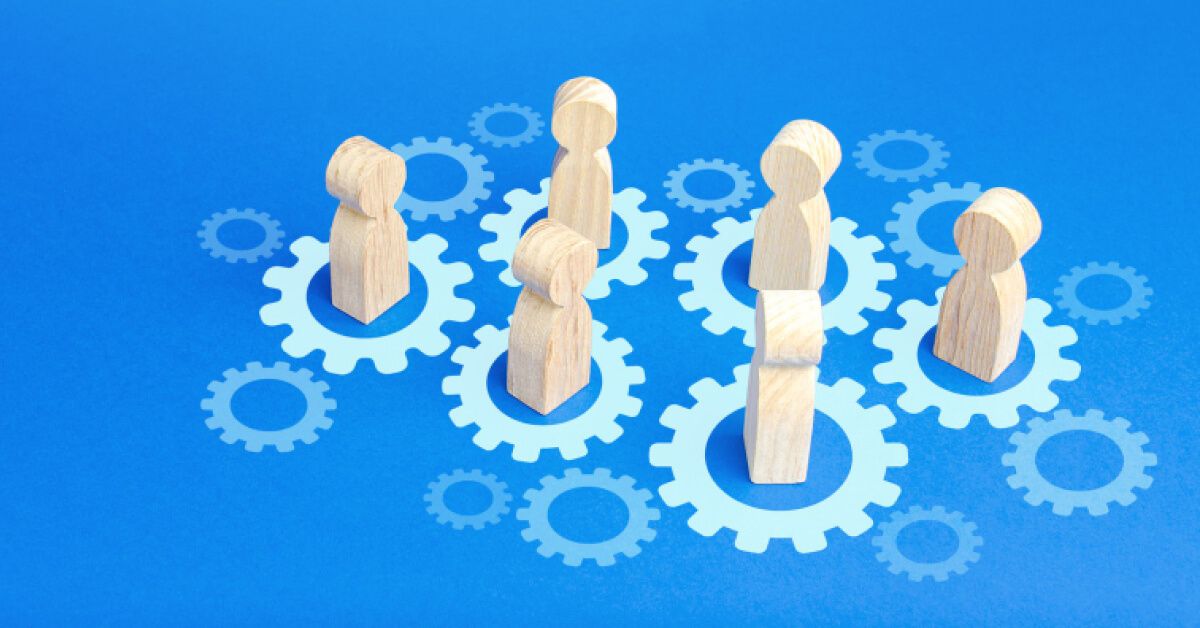Employee engagement best practices: A complete guide to boost employee engagement in 2025

Think about any Pixar movie, whether it’s Toy Story, Inside Out, or Monsters, Inc. and you’ll notice one thing: the best stories aren’t just about action, they’re about connection. Woody and Buzz didn’t just work together because they had to; they bonded through friendship and shared purpose.
That’s what true employee engagement feels like. It’s not about ticking off tasks or following orders. It’s about employees feeling valued, having a deeper sense of purpose, and knowing they’re contributing to something meaningful. Just like the characters in Pixar films, when people are genuinely connected to their work and their team, the results speak for themselves.
In this blog, we’ll explore employee engagement best practices that help foster those kinds of connections, creating a workplace where employees aren’t just clocking in, they’re invested in the story, driven to succeed, and excited to contribute
Employee engagement definition

Employee engagement refers to the level of emotional and psychological investment employees have in their work and the organization they are part of. It’s not just about job satisfaction or staying busy, it’s about whether employees feel connected to their role, motivated to contribute, and aligned with the company’s purpose. Understanding the employee engagement meaning is essential for building a workplace where people are committed, accountable, and energized by what they do.
To achieve high engagement, companies need to go beyond surface-level perks. They must implement effective engagement strategies that build trust, provide clarity, and recognize individual contributions. This includes leadership communication, opportunities for skill development, and continuous feedback.
Strategic workforce engagement strategies enable organizations to translate engagement into real outcomes, improved performance, lower turnover, and stronger team collaboration. It’s a measurable approach to shaping how employees show up, interact, and perform.
Employee engagement isn’t a buzzword, it’s a business-critical metric that directly impacts culture, performance, and retention when nurtured with intention and consistency.
The 3 types of employees you have: Examples

In every organization, employees fall into one of three categories that define their level of involvement and contribution. Understanding these types is essential to applying the best employee engagement strategies and knowing how to improve engagement in the workplace.
1. Engaged employees
Engaged employees are highly connected to their work and the organization’s goals. They take initiative, offer solutions, and are emotionally invested in their performance. These individuals are your culture builders and are essential to driving innovation and team morale. In a modern workplace employee engagement context, they respond well to exclusive engagement tactics like ownership in decision-making and career pathing.
Example: A product manager who proactively solves customer issues, mentors team members, and suggests process improvements during meetings. This person doesn’t wait to be told what to do—they’re aligned with both the “why” and the “how” of their role, naturally helping to increase team engagement.
2. Unengaged employees
Unengaged employees do what’s required, but not much more. They lack motivation or purpose and may feel disconnected from the company’s mission. Often, these employees are overlooked, but with the right workplace engagement strategies, they can be re-engaged.
Example: An HR associate who attends meetings but rarely participates or volunteers ideas. They meet deadlines but show no visible enthusiasm. With mentorship and regular feedback, they could shift toward active engagement.
3. Actively disengaged employees
Actively disengaged employees are not only unhappy—they often undermine the work of others. Their negative behavior can spread, impacting morale and team performance.
Example: A sales rep who criticizes company policies publicly and resists collaboration. Addressing their concerns directly and involving them in solution-building can be part of how to improve engagement in the workplace.
Why is employee engagement important in a modern workplace?

Employee engagement isn't just a workplace trend; it's a strategic necessity in the modern world. It fuels innovation, builds resilience, enhances well-being, attracts talent, and ensures a customer-centric approach that is vital for sustained success in today's dynamic business landscape.
Employee engagement remains paramount in modern workplaces for several compelling reasons:
- Innovation catalyst: Engaged employees are the driving force behind innovation. They bring fresh perspectives and actively contribute ideas, fostering a culture of continuous improvement and creativity that keeps organizations competitive in rapidly evolving markets.
- Resilient workforce: Employee engagement builds resilience. Engaged employees are more adaptable to change and can navigate through disruptions with a positive outlook. This resilience becomes a critical asset in today's dynamic business environment.
- Enhanced employee well-being: Engagement promotes well-being. Employees who feel valued and connected to their work report higher levels of mental and emotional well-being. Prioritizing employee well-being reduces absenteeism boosts overall productivity and keeps more employees engaged.
- Attracting top talent: Engaged workplaces act as magnets for top talent. Job seekers are drawn to organizations with a reputation for positive work culture and high engagement levels. This influx of talent helps companies stay competitive.
- Customer-centric approach: Engaged employees provide better customer experiences. They are more likely to go the extra mile to meet customer needs, resulting in increased customer satisfaction, loyalty, and long-term business growth.
What are the seven components of employee engagement?

Employee engagement is a multi-faceted concept, and there isn't a universally agreed-upon set of components. However, a commonly referenced model includes seven key components:
- Meaningful work: Employees find their work meaningful when they understand how their roles contribute to the organization's mission and goals. When they see the impact of their contributions, they are more engaged.
- Positive relationships: Building positive relationships with colleagues, managers, and the broader team is crucial. Engaged employees feel a sense of belonging and camaraderie, which fosters a supportive work environment.
- Autonomy and empowerment: Giving employees the autonomy to make decisions and take ownership of their work empowers them. Engaged individuals have a degree of control over their tasks and how they accomplish them.
- Continuous learning and development: Engagement often involves opportunities for growth and development. Organizations that invest in their employees' learning and skill development tend to have more engaged teams.
- Recognition and appreciation: Feeling valued and appreciated is a fundamental component of any employee engagement strategy. When employees receive recognition and rewards for their contributions, it reinforces their sense of purpose.
- Clear communication: Effective communication from leadership and within teams is essential. Engaged employees are informed about organizational goals, changes, and expectations, fostering a sense of transparency and trust.
- Work-life Balance: A balance between work and personal life is critical for employee engagement best practice. Organizations that support employees in maintaining this balance tend to have more satisfied and engaged staff.
While these seven components provide a framework for understanding employee engagement, it's important to note that engagement can vary from person to person and across different organizations. Tailoring employee engagement strategies to the unique needs and values of your workforce is key to achieving higher levels of engagement and productivity.
What are the benefits of an engaged workforce?

An engaged workforce is a valuable asset for any organization, offering a multitude of benefits that directly impact productivity, profitability, and overall success. Here are some of the significant advantages of having an engaged workforce:
- Increased productivity: Engaged employees are more motivated and committed to their work. They tend to put in extra effort, leading to higher productivity levels. Studies have shown that highly engaged teams can outperform their less engaged counterparts by as much as 21%.
- Enhanced innovation and creativity: Engaged employees are more likely to share their ideas and think creatively to solve problems. They feel a sense of ownership over their work and are encouraged to contribute to the organization's growth and innovation.
- Improved employee retention: Engaged employees are less likely to seek employment elsewhere. They feel a stronger connection to the organization, its values, and its mission, leading to lower turnover rates and reduced recruitment costs.
- Higher customer satisfaction: Engaged employees are more likely to provide excellent customer service. They are motivated to meet customer needs and go the extra mile, resulting in increased customer satisfaction and loyalty.
- Better employee health: Engagement positively affects employee well-being. Engaged individuals experience lower stress levels, reduced absenteeism, and improved physical and mental health, which translates into lower healthcare costs for employers.
- Cost savings: Engaged employees are more efficient and make fewer errors, reducing operational costs. Additionally, lower turnover rates mean organizations save on recruitment, onboarding, and training expenses.
- Enhanced reputation: Organizations with engaged workforces often enjoy a positive reputation. This can attract top talent, customers, and investors who want to be associated with a company known for its employee-centric culture.
- Greater agility and adaptability: Engaged employees are more adaptable to change and willing to embrace new challenges. This agility is crucial in today's fast-paced business environment, where organizations must quickly respond to market shifts.
- Stronger organizational culture: Employee engagement contributes to a positive organizational culture characterized by trust, collaboration, and open communication. This culture, in turn, reinforces engagement, creating a virtuous cycle.
- Higher profitability: Ultimately, the culmination of these benefits leads to improved profitability. Companies with engaged workforces tend to achieve higher financial performance, making employee engagement a strategic driver of success.
The advantages of engagement extend far beyond employee satisfaction, influencing every aspect of an organization's performance, from productivity and innovation to customer satisfaction and profitability.
What is the significance of an employee engagement program?

An employee engagement program isn’t just a nice-to-have—it’s a strategic must.
It bridges the gap between what employees need and what organizations expect, directly impacting employee job satisfaction.
- Boosts morale and job satisfaction: A structured engagement program increases employee motivation and commitment, creating a more energized and fulfilled workforce.
- Improves performance and productivity: By promoting communication, recognition, and skill development, engagement programs drive better output and overall team performance.
- Reduces turnover and hiring costs: Engaged employees are more likely to stay, helping reduce attrition and lowering the costs tied to recruitment and onboarding.
- Enhances customer satisfaction: Happier, more engaged employees provide better service, leading to stronger customer loyalty and satisfaction.
- Aligns employee well-being with business goals: Engagement programs are more than HR initiatives—they help connect individual fulfillment with organizational success, fueling sustainable growth.
What are the 7 key drivers of employee engagement you want to measure and improve?

To build a truly engaged workforce, you need to know what actually drives employee engagement—and how to track it. These seven key areas directly impact employee engagement levels and should be regularly measured and optimized.
1. Leadership effectiveness:
Effective leadership is crucial in engaging employees. Leaders who provide clear direction, inspire trust and lead by example create a positive work environment. To measure this driver, assess leadership qualities like communication skills, accessibility, and the ability to inspire and empower employees.
2. Communication and transparency:
Open and transparent communication builds trust and keeps employees informed about the organization's goals and changes. Measuring this driver involves evaluating the effectiveness of communication channels, employee feedback and mechanisms, and the organization's commitment to transparency.
3. Career development opportunities:
Employees seek opportunities for growth and advancement. Measure this driver by assessing whether employees understand the availability of training, mentorship programs, and career paths within the organization.
4. Recognition and appreciation:
Feeling valued and appreciated is a potent engagement driver. Measure it by evaluating the frequency and effectiveness of recognition programs, both formal and informal, that celebrate employees' contributions.
5. Work-life balance:
Striking a balance between work and personal life is crucial to increase employee engagement. Measure this driver by assessing policies and practices that support flexibility, remote work, and overall work-life integration.
6. Employee well-being:
Employee well-being encompasses physical and mental health. Measure it by analyzing health programs, stress management initiatives, and employee assistance programs that support well-being.
7. Alignment with organizational values:
Employees need to connect their personal values with the organization's mission and values. Measure alignment by evaluating the extent to which employees perceive their work as meaningful and aligned with the organization's purpose.
These drivers encompass a holistic approach to measuring and improving employee engagement. By focusing on these key drivers, organizations can create a well-rounded strategy that fosters a highly engaged workforce, leading to improved productivity, retention, and overall success.
7 Effective employee engagement strategies

Engaged employees don't just do their jobs—they actively contribute to business growth, culture, and innovation. In today’s competitive landscape, where retention and performance are tightly linked, companies must shift from generic perks to intentional, people-centric strategies.
The following best practices in employee engagement are designed to strengthen the core components of employee engagement and help you build a culture that truly connects with your workforce.
- Make goals transparent and personal: Link company objectives to individual roles so employees see the bigger picture. This alignment creates purpose, which is a core part of the components of employee engagement. Use personal development plans to connect growth opportunities to team objectives.
- Prioritize clarity over communication noise: It’s not just about talking—it's about being understood. Leaders should deliver clear, consistent messages about expectations and vision. Clarity helps eliminate friction and builds trust, a foundation of best practices in employee engagement.
- Let employees own the outcomes: Ownership fuels accountability. Allow employees to make decisions within their scope and trust them with outcomes. This fosters autonomy, a key pillar in modern talent engagement strategies.
- Build micro-feedback loops, not annual reviews: Real-time feedback beats delayed praise. Set up monthly check-ins and use pulse surveys to catch disengagement early. This ongoing dialogue is part of the best employee engagement strategies.
- Reward behaviors, not just results: Recognize not only outcomes but the attitudes and behaviors that support company culture. This shapes long-term engagement. Recognition becomes one of the strongest engagement best practices when tied to values.
- Design learning as a two-way street: Create space for peer learning, mentoring, and reverse mentoring. Employees want more than courses—they want connection. This is a vital part of human-centered components of employee engagement.
- Treat employee experience like customer experience: Map the employee journey the way you’d map a customer journey. Look at pain points, friction zones, and moments that matter. It's one of the most overlooked but high-impact best practices in employee engagement.
5 Examples of employee engagement best practices followed by MNCs

Multinational corporations (MNCs) often set the standard for employee engagement best practices due to their global reach and diverse workforce. Here are five examples of employee engagement best practices commonly followed by MNCs:
1. Comprehensive onboarding programs:
MNCs recognize the importance of a robust onboarding process. They invest in thorough orientation programs that help new employees acclimate to the company culture, understand their roles, and build connections with colleagues. This ensures a positive start and long-term commitment.
2. Cross-cultural training and inclusivity:
With diverse teams spanning the globe, MNCs prioritize cross-cultural training to promote inclusivity and understanding. They create a welcoming environment for employees from various backgrounds, fostering a sense of belonging and equity.
3. Regular performance feedback:
MNCs have embraced a shift from traditional annual reviews to continuous performance feedback. They implement regular check-ins and encourage open communication between managers and employees, providing opportunities for growth and development.
4. Flexible work arrangements:
Recognizing the importance of work-life balance, MNCs offer flexible work arrangements, such as remote work options, flexible hours, and compressed work weeks. This empowers employees to manage their professional and personal lives effectively.
5. Investment in learning and development:
MNCs prioritize employee growth by providing extensive learning and development opportunities. They offer access to training resources, mentorship programs, and opportunities for skill enhancement, aligning individual career goals with organizational objectives.
These best practices enhance employee engagement and contribute to MNCs' ability to attract and retain top talent globally. By fostering inclusive cultures, providing growth opportunities, and supporting work-life balance, MNCs create environments where employees are motivated, productive, and committed to the organization's success.
30+ Employee engagement best practices to follow in the workplace

Creating a vibrant workplace with engaged employees requires a mix of best practices, and sometimes a touch of quirkiness can make the difference. Here are 30+ employee engagement best practices with a twist:
- Coffee roulette: Encourage employees to have "coffee roulette" sessions with colleagues they don't often interact with, fostering cross-departmental relationships.
- Theme days: Have themed days, like "Bring Your Pet to Work" or "Wacky Hat Day," to inject fun into the workplace.
- Gamify learning: Turn training and development into games with rewards for achievements, making learning enjoyable.
- Lunch and learn: Host regular "Lunch and Learn" sessions where employees can enjoy a meal while expanding their knowledge.
- Wellness challenges: Organize friendly wellness challenges like step competitions, and rewarding healthy habits.
- Rotating leadership: Allow employees to take the reins of meetings or projects, promoting leadership at all levels.
- Gratitude wall: Set up a "Gratitude Wall" where employees can post thank-you notes to colleagues.
- Walking meetings: Conduct meetings outdoors while taking a stroll, combining productivity with fresh air.
- Mentorship "Buddies": Pair newcomers with "buddies" who help them navigate the workplace.
- Anonymous suggestion box: Implement an anonymous suggestion box for employees to share ideas without fear of judgment.
- Celebrity guest speakers: Invite local celebrities or industry experts to share insights and inspire employees.
- Pop-up food trucks: Surprise employees with occasional food truck visits for a tasty break.
- Random acts of kindness day: Dedicate a day to random acts of kindness, where employees surprise each other with gestures of goodwill.
- Flexible seating: Allow employees to choose their workspaces, from beanbags to standing desks, fostering creativity.
- Escape room challenges: Organize team-building "Escape Room" challenges to encourage collaboration and problem-solving.
- Comedy nights: Host comedy nights or improv workshops to lighten the mood and spark laughter.
- Innovation bonuses: Reward employees for innovative ideas that benefit the company, stimulating creative thinking.
- DIY desk décor contests: Let employees personalize their workspace and hold fun competitions to showcase creativity.
- Team Spotify playlists: Create collaborative playlists where teams add their favorite workday songs to connect through music.
- Culture swap lunches: Encourage team members to share dishes or traditions from their cultures for a fun, inclusive experience.
- Virtual game breaks: Schedule short trivia, quizzes, or mini-games during breaks—especially helpful for remote teams.
- Pet of the month feature: Spotlight employees’ pets in newsletters or internal channels with fun bios and photos.
- "Ask Me Anything" (AMA) with leadership: Build transparency and trust by hosting open Q&A sessions with leadership.
- Skill-swap sessions: Let employees teach each other non-work-related skills like cooking, art, or productivity hacks.
- Vision board day: Give employees time and materials to craft personal or career-focused vision boards.
- Surprise appreciation notes: Encourage spontaneous thank-you notes or small gestures of appreciation between peers.
- Work anniversary shoutouts: Celebrate employee milestones with personalized messages, small gifts, or public recognition.
- Plant-your-own-desk-plant kits: Distribute mini plant kits to brighten workspaces and promote calm.
- Friday “No Meeting” policy: Block off time for deep work or early finishes to reduce burnout.
- In-office book exchange: Set up a book swap station to encourage learning and shared interests.
- Creativity hour: Allocate one hour monthly for employees to work on creative ideas, work-related or not.
- Employee-curated newsletter: Rotate newsletter ownership so different teams can share updates, stories, and shoutouts.
By infusing these quirky elements into your workplace, you can create a more engaging and enjoyable environment where employees feel valued, motivated, and connected.
Significance of measuring employee engagement in the modern workplace

You can’t fix what you can’t see—and employee engagement is no exception. Without measuring it, you’re guessing at what motivates your people or where disengagement is creeping in. By turning feedback into data, and data into action, organizations can make smarter moves that actually improve how teams feel, work, and perform.
Identify what’s working—and what’s not
Engagement metrics reveal which strategies are truly connecting with employees. This helps organizations align their approach with the best practices for employee engagement initiatives instead of relying on outdated assumptions. With clear insights, companies can double down on what drives results and discard ineffective tactics.
Detect early signs of disengagement
Regularly tracking engagement allows HR teams to identify subtle drops in morale or motivation. These early warning signs help prevent larger issues like burnout or turnover. It's a proactive step that reflects the best practices for talent engagement in high-performing companies.
Improve decision-making with data
When engagement is measured consistently, leaders gain reliable input for workforce planning and HR strategy. Data-driven insights guide resource allocation, communication priorities, and leadership development. This results in smarter, more targeted employee initiatives.
Foster continuous improvement
Measuring engagement supports a mindset of iteration and growth. It helps teams stay responsive to employee needs and evolving workplace expectations. Rather than guessing, companies can adapt based on real, timely feedback.
Strengthen employee trust and transparency
Sharing engagement survey results and acting on them signals to employees that their input matters. This builds credibility and fosters a culture of accountability. Over time, this transparency deepens employee commitment and loyalty.
Role of employee engagement software in building a culture of engagement at work
Creating a culture of engagement takes more than good intentions—it takes the right tools to make it consistent, scalable, and meaningful. That’s where employee engagement software comes in. It gives HR and leadership teams the visibility, insights, and structure needed to truly connect with employees and build a workplace people want to be part of.
- Captures real-time employee sentiment: These platforms allow you to gather feedback through employee engagement surveys, quick pulse surveys, polls, or check-ins. Leaders no longer have to rely on guesswork or infrequent reviews. It’s a vital part of best practices in modern workplace engagement.
- Identifies hidden engagement gaps: Advanced analytics highlight where engagement is dropping—across teams, departments, or demographics. This enables targeted interventions instead of one-size-fits-all strategies. It’s a smarter way to understand how to improve team engagement effectively.
- Enables continuous feedback loops: Software tools make it easy to build ongoing conversations between employees and leadership. Feedback becomes a two-way street rather than a one-time survey. This fosters a culture of responsiveness and trust.
- Supports personalized action plans: Many platforms offer tailored recommendations for managers based on survey data. This helps leaders take action quickly and confidently. The result? More relevant and timely engagement efforts.
- Drives accountability across leadership : Engagement software often highlights team-specific data, helping managers see exactly where engagement needs attention. With targeted insights and action prompts, leaders are equipped and expected to own their team's engagement outcomes. It promotes shared responsibility across all levels.
Conclusion
Employee engagement isn’t a one-time initiative—it’s an ongoing commitment to understanding, supporting, and empowering your workforce. From implementing strategic best practices to leveraging the right tools, every step you take toward engagement has a direct impact on performance, retention, and culture. When done right, engagement becomes more than a metric—it becomes part of how your organization operates.
This is where CultureMonkey can make all the difference. As an employee engagement platform, CultureMonkey helps HR leaders automate feedback collection, measure engagement through real-time analytics, and act on insights with precision. From pulse surveys to customized action plans, it offers everything you need to improve team engagement and build a workplace culture people genuinely believe in.
Whether you're just starting your engagement journey or looking to scale existing efforts, CultureMonkey gives you the tools to listen better, respond faster, and lead smarter. Because a truly engaged workforce doesn’t happen by chance—it’s built with intention, backed by data, and supported by the right technology.
FAQs
1. Why is employee engagement more important than ever in 2025?
Employee engagement is important because it directly impacts productivity, retention, and overall business performance. Engaged employees are more motivated, innovative, and committed to their work. They contribute to a healthy workplace culture, deliver better customer experiences, and support long-term growth. In short, high employee engagement levels create a stronger, more resilient, and successful organization.
2. What are the key challenges to employee engagement in 2025?
Key challenges to employee engagement include sustaining connection in remote or hybrid teams, tackling burnout and mental health issues, and aligning personal goals with changing company priorities. These hurdles can impact morale and productivity. Overcoming them demands proactive communication, supportive leadership, and well-designed engagement strategies that make employees feel heard, valued, and aligned with business goals.
3. How can organizations measure employee engagement effectively in 2025?
Measuring employee engagement requires a multi-faceted approach. Utilize modern tools and software for regular pulse surveys and feedback mechanisms. Analyze metrics such as employee Net Promoter Score (eNPS), Employee Satisfaction Score (ESS), and the results of engagement surveys. Monitor absenteeism rates and turnover as indicators of engagement. Incorporate sentiment analysis of employee feedback and comments for deeper insights.
4. What are some unique employee engagement best practices for 2025?
In 2025, adopt reverse mentoring to bridge generational gaps, and promote virtual team-building to strengthen remote connections. Encourage micro-learning breaks for continuous upskilling and growth. Embrace results-only work environments that focus on outcomes over hours. These modern practices boost engagement, trust, and performance by aligning work culture with evolving employee needs and preferences, ultimately driving retention and success.
5. How can organizations ensure long-term success with employee engagement in 2025?
Organizations ensure long-term employee engagement success by committing to continuous improvement and embedding engagement into their culture. They treat engagement as an ongoing priority, not a one-time initiative. Leaders must actively champion engagement efforts while involving employees in co-creating strategies. This collaborative, consistent approach drives sustained engagement, improved performance, and lasting organizational success for long-term impact.
6. What are the 5 C’s of employee engagement?
Employee engagement's 5 C’s are Connection, Communication, Commitment, Compensation, and Care. These pillars foster strong relationships between employees and employers, build trust, and promote a culture of engagement. When organizations prioritize these fundamentals, they create an environment where employees feel valued, supported, and inspired to contribute meaningfully to the company’s long-term success, resulting in measurable growth.



